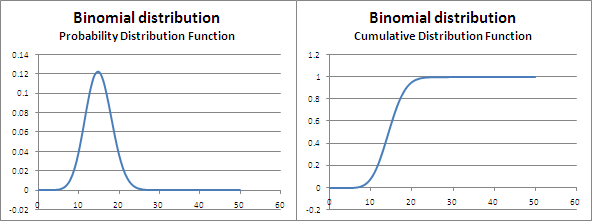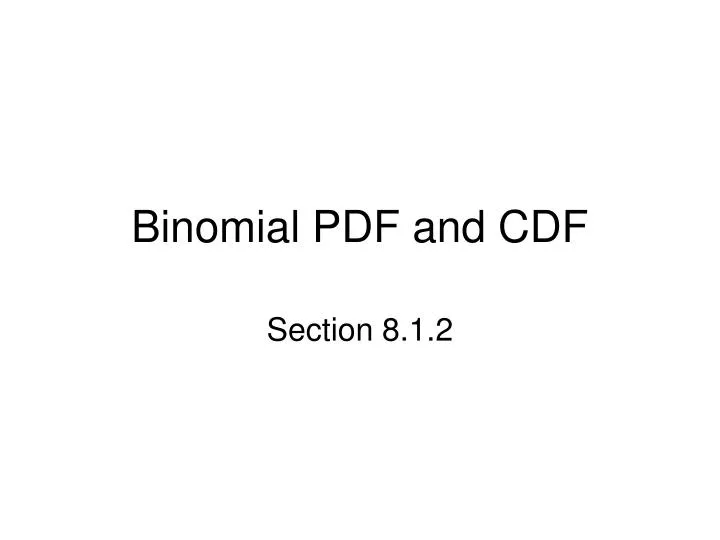
Question: P and R play a game and their chances of winning are in the ratio 3:5. We need to calculate the probability for the value of X= x lying in between 0 and 4.Calculate the mean of the random variable X.Question: A random variable X has the following probability function: The probability of success, p or that of failure, q is constant for each trial.The trials are independent of each other.
BINOMIAL CDF VS PDF TRIAL
Each trial results in only two outcomes i.e., success and failure.A binomial trial is a set of n independent Bernoullian trials. Any such random variable X is binomial variate. A random variable X will have a binomial distribution ifįor x = 0, 1, …, n and P(X = x) = 0 otherwise. The total number of ways in which we can have success is nC x.

Assume that out of these n times, we get success for x times and failure for the remaining i.e., n−x times.

The probability of success is p and that of failure is q. Suppose a random experiment with exactly two outcomes is repeated n times independently. The probability of success or failure should be the same in each trial.Each trial should have exactly two outcomes: success or failure.P(X = x) = p x (1 – p) 1−x, for x = 0, 1 and P(X = x) = 0 for other values of x. An egg is either boiled or not boiled.Ī random variable X will have Bernoulli distribution with probability p if its probability distribution is A manufactured item can be defective or non-defective. Consider a random experiment of items in a sale, they are either sold or not sold. The probability of success is taken as p while that of failure is q = 1 − p. Bernoulli TrialsĪ random experiment whose outcomes are only of two types, say success S and failure F, is a Bernoulli trial. It shows the distance of a random variable from its mean. The Variance of a Random VariableĪ variance of a random variable shows the variability of the random variables. It is calculated as, E(X) = μ = ∑ x ip i, i = 1, 2, …, n. It is also known as the expectation of a random variable. The mean shows the average value of a random variable. Mean of a random variable shows the location or the central tendency of the random variable. With the help of probability distribution, we can calculate the mean and the variance of a random variable. The sum of the probability distribution for all possible values of a random variable is always 1. The probability distribution is: P(X = x i) = p i for all x = x i and P(X = x i) = 0 for x ≠ x i. The values of random variables along with the corresponding probabilities are the probability distribution of the random variable. For different values of the random variable, we can find its respective probability. Probability Distribution of a Random Variableįor any event of a random experiment, we can find its corresponding probability. Continuous Random Variable: A variable which assumes infinite values of the sample space.Discrete Random Variable: A variable which can assume only a countable number of the real values i.e., the value of a discrete random sample.Mean and Variance of Random Distribution.Random Variable and Its Probability Distribution.What are the other random variables you can think of? Browse more Topics under Probability We can define more than one random variable on the same sample space. This random variable can take up to the values from 2 to 12. Let the sum of the numbers on the faces of dice be any random variable. represent the value of the random variable.Ĭonsider a random experiment of throwing of two dice. The lowercase letters like x, y, z, m etc. A random variable is always denoted by capital letter like X, Y, M etc. Mathematically, a random variable is a real-valued function whose domain is a sample space S of a random experiment. A random variable can take up any real value. If the value of a variable depends upon the outcome of a random experiment it is a random variable. It may vary with different outcomes of an experiment.


A variable is something which can change its value.


 0 kommentar(er)
0 kommentar(er)
